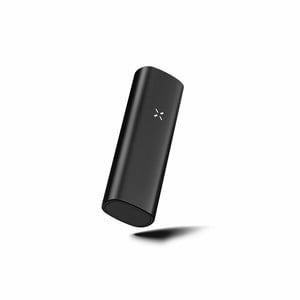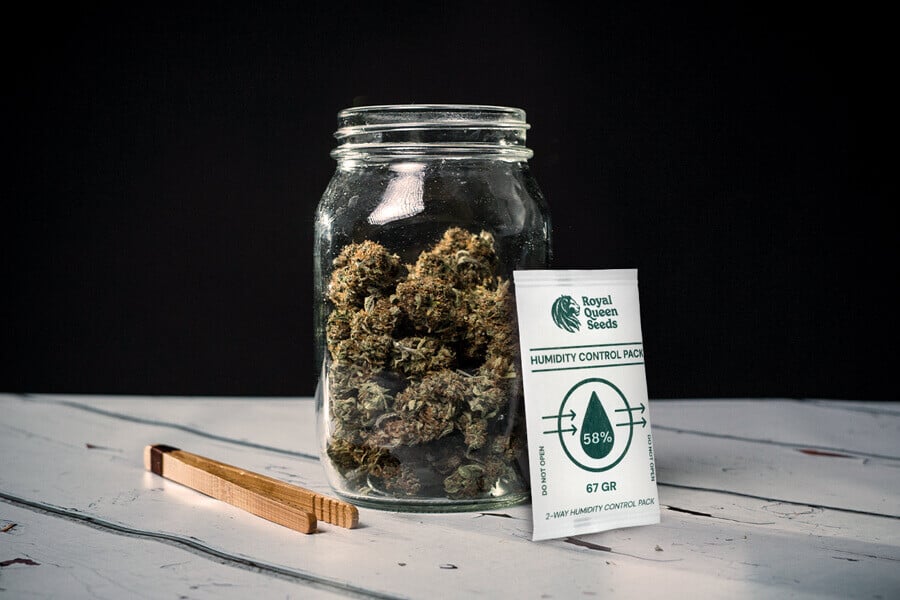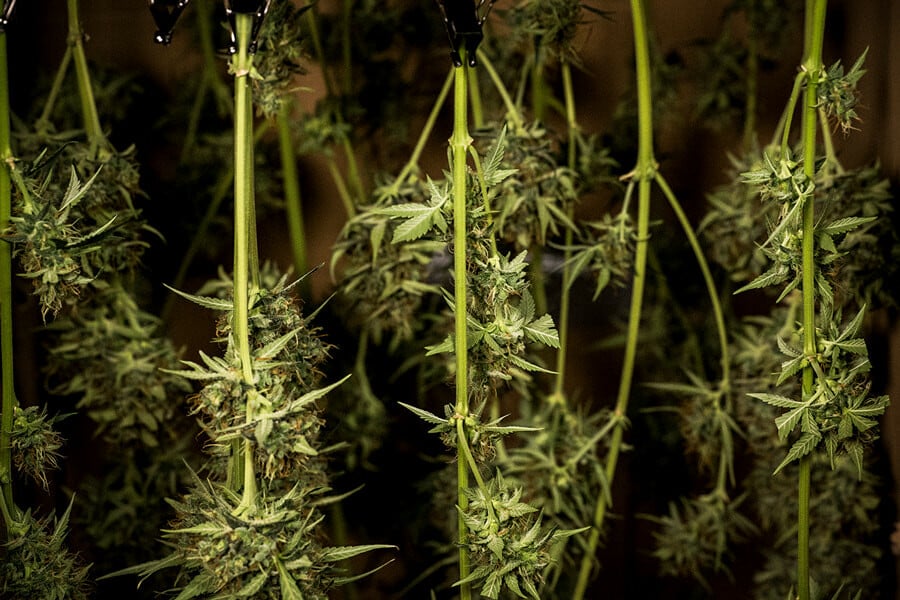.

How to Preserve the Aroma of Your Cannabis Buds
Complex mixtures of terpenes, esters, and sulphur compounds underpin the outstanding scents of different cannabis strains. These molecules also impact the effects of each variety. They're wonderful, but volatile. You need to take care in order to preserve these chemicals and, thus, the aroma of your precious buds! Find out how.
No other plant smells quite like cannabis. The flowers of this species are packed with aromatic molecules, including (but not exclusively) terpenes. As well as offering delightful scents, terpenes directly contribute[1] to the subjective effects of weed.
Cannabis aromatics smell great and make for more pleasant highs. So, it makes sense to do everything you can to preserve them. But why does weed lose its smell?
Contents:
A Primer on Cannabis Terpenes
Cannabis plants are chemical biofactories that produce over 400 chemical compounds[2]. Only a handful of these molecules receive the attention of contemporary cannabis culture, particularly THC and CBD. However, modern cannabis science has discovered that many compounds work in unison to produce the unique effects of each cultivar.
Among these constituents, terpenes play an important role. Cannabis plants produce over 150[3] of these volatile aromatic chemicals. These compounds underpin much of the aroma of particular cannabis strains. However, they also directly contribute to the high. The entourage effect theory posits that terpenes and cannabinoids, such as THC, amplify each other’s actions.
Terpenes play an important role in the cannabis experience. However, their volatile nature means they readily degrade. As a grower and smoker, there are various steps you can take to preserve these compounds, resulting in tastier and stronger weed.

The Role of Terpenes in Cannabis Plants
Before we delve into combating terpene degradation, let’s quickly cover the roles of terpenes in cannabis plants. Understanding their functions in plant physiology will give you even more of an appreciation for those delightful smells during the flowering phase!
The major roles of terpenes in weed plants include:
- UV protection: Terpenes act as a natural sunscreen for plants. While plants need light to create energy, certain wavelengths can cause harm. Terpenes help to absorb and dissipate UV light.
- Pollinator attraction: Most cannabis growers try to avoid pollination when growing weed. However, cannabis plants want nothing more than to reproduce. Terpenes help them to achieve this goal by attracting pollinating insects, including bees.
- Pest deterrence: The potent odour produced by terpenes helps to protect cannabis plants against pest insects and larger herbivores.
- Plant-to-plant communication: Plants use terpenes as a chemical language. They release these compounds to warn each other about grazing predators.
- Bacteria farming: Yes, you read that right. Cannabis plants farm bacteria in their trichomes. These microbes pull in nitrogen from the atmosphere, and trichome cells give them carbon for their hard work. Terpenes help to protect these bacteria[4] from oxidation.
Cannabis Aroma: More Than Mere Terpenes
Sure, terpenes play a fundamental role when it comes to cannabis aroma—but they don’t work alone. Several other categories of compounds contribute to the nuanced scents of weed strains.
Other important players include:
- Volatile sulphur compounds: Also known as VSCs, these molecules pack a pungent punch. They underpin the skunk-like aromas found in many cannabis cultivars.
- Esters: This class of organic compounds plays an important role in plant physiology. They help to create fats and are important in hormone signalling and seed germination. In other plants, such as strawberries and bananas, they also contribute to their signature aroma. In cannabis, they provide sweet and fruity notes.
Persevering the aroma of your cannabis buds helps to shield these compounds, too. Use the tips below to protect the terpenes, VSCs, and esters in your weed. Trust us, you’ll taste the difference!
Ready to lock in every drop of aroma? Download our Pro Growing Guide for expert drying and curing methods, precise humidity targets, storage protocols, and environmental controls that preserve terpenes, VSCs, and esters from harvest to jar.
Free Advanced
Growing Guide!

How to Preserve Aromatic Cannabis Chemicals During Harvesting
There are many exciting moments during the cannabis growing cycle, but they all pale in comparison to harvest time! Chopping and trimming buds feels satisfying, but it can negatively influence aroma if performed incorrectly. You need to exercise caution when processing your buds to protect the precious aromatic compounds. Follow the tips below to achieve the best-smelling buds possible.
Protect Your Trichomes
Trichomes are small mushroom-shaped glands that give buds their frosty appearance. These tiny chemical factories are tasked with producing cannabinoids and terpenes. You need to protect them at all costs to preserve the aroma of your cannabis flowers.
Try to avoid touching buds during flowering to avoid damaging them. And during harvest, handle with great care. Be as gentle as possible when touching your buds, and avoid dropping and shaking.

To Flush or Not to Flush?
Flushing involves withholding nutrients from plants during the last few weeks of flowering. A debate rages around this topic; some growers swear by it while others are firmly against it. Regardless of where you stand, flushing could help to boost the aroma of your weed plants.
Restricting nutrients forces cannabis plants to use up their internal shops before harvest. These nutrients contribute harshness and bitterness to buds. By facilitating their removal, growers increase the concentration of aromatic molecules by dry weight.
Trim Your Weed
Trimming flowers of their small sugar leaves is a standard practice among cannabis growers. While sugar leaves contain small amounts of terpenes and aromatics, they also feature plenty of nitrogen and other nutrients. Trimming away sugar leaves will increase the concentration of aromatics within each bud by dry weight. The result? Flowers that taste better, with a stronger aroma.
Dry Buds to Banish Moisture
The work doesn’t stop at harvest time. You’ll need to dry your weed buds correctly to preserve them and eliminate the chances of mould. Fail here, and you’ll end up with bud that has a musty and grassy smell that overpowers the aromas of terpenes, VSCs, and esters.
Cure Your Weed to Enhance Aroma
Curing cannabis buds vastly improves their aroma and helps to preserve terpenes. Chemical changes occur in the flowers during this time; the chlorophyll breaks down—removing the grassy flavour—allowing terpenes and other aromatics to dominate when it's time to smoke. By allowing your buds to cure for at least four weeks, you can increase the smell of your stash significantly.
Store Your Weed Correctly
Terpenes are volatile compounds. It doesn’t take much to cause them to degrade, which can greatly impact the aroma of your buds. Light and air are two of the biggest culprits that negatively influence terpene profiles. To protect against these factors, store your buds in a cool and dark place in an airtight glass jar or other suitable storage container.
How to Enhance Cannabis Aroma When Smoking
Now you’re aware of how to preserve the aroma of your cannabis flowers during harvest time and directly after. Next, we’re going to cover some tips when it comes to smoking the fruits of your labour. Follow this advice to unlock the tastiest experience possible.
Use a Grinder
The time of preserving trichomes is over—you’re about to set them on fire, after all. Grind up your weed before loading it into joints and bong bowls. This will increase the surface area of your flower material. It’ll burn more evenly and allow for a more even release of aromatic compounds. There are many different types of grinders available, from basic acrylic models to more complex metal designs that collect errant trichomes in a dedicated chamber.
Use Lighter Alternatives
Traditional lighters can impact aroma and taste during a smoking session. Fuelled by butane, they can introduce a slight fuel odour into the mix. To avoid this, opt for gas-free natural alternatives. Try lighting up a piece of hemp wick and using this to combust your weed for improved scents and tastes.
Clean Your Smoking Accessories
As you’re aware, cannabis is a sticky plant indeed. Residue quickly builds up in pipes, bongs, and vaporisers. Make sure to regularly clean your smoking gear to avoid nasty flavours and aromas from intruding on your smoking experience. Put in the work frequently, and you’ll enjoy a fresh and untainted experience every time.
Choose Vaping Instead of Smoking
Vaping and smoking are two very different ways of consuming cannabis. They both involve inhalation of cannabis components, but subject the cannabis to vastly different temperatures. Smoking uses very high temperatures to combust weed, meaning you’ll inhale much more than cannabinoids and terpenes. In contrast, vaping uses lower temperatures to target THC and aromatic molecules, without igniting additional flower material. Not only does this result in superior taste, but it smells nicer to many cannabis users, too.
PAX Mini Vaporizer
|
|
Conduction |
|
|
3,1 x 2,2 x 9,3 cm |
|
|
89 gr |
|
|
190 - 215°C / 374 - 420°F |
|
|
22 sec |
|
|
0,25 gr |
|
|
Digital & manual |
|
|
Dry Herbs |
Enjoy Better Flavours and Aromas When You Blaze
It takes a considerable amount of effort to raise a seed into a mature cannabis plant. After all of that work, you owe it to yourself to do all you can to preserve the aromas and flavour of your precious buds. During harvest, make sure to handle your flowers gently to protect the trichomes and ensure you dry and cure correctly. When consuming weed, use a grinder and light joints and bong bowls with hemp wick instead of traditional lighters. Now, go savour some aromatic molecules!
- Psychoactives | Free Full-Text | The Nose Knows: Aroma, but Not THC Mediates the Subjective Effects of Smoked and Vaporized Cannabis Flower https://www.mdpi.com
- Chemistry, Metabolism, and Toxicology of Cannabis: Clinical Implications - PMC https://www.ncbi.nlm.nih.gov
- Terpenes in Cannabis sativa – From plant genome to humans https://www.sciencedirect.com
- Histochemical Evidence for Nitrogen-Transfer Endosymbiosis in Non-Photosynthetic Cells of Leaves and Inflorescence Bracts of Angiosperms - PMC https://www.ncbi.nlm.nih.gov
















































